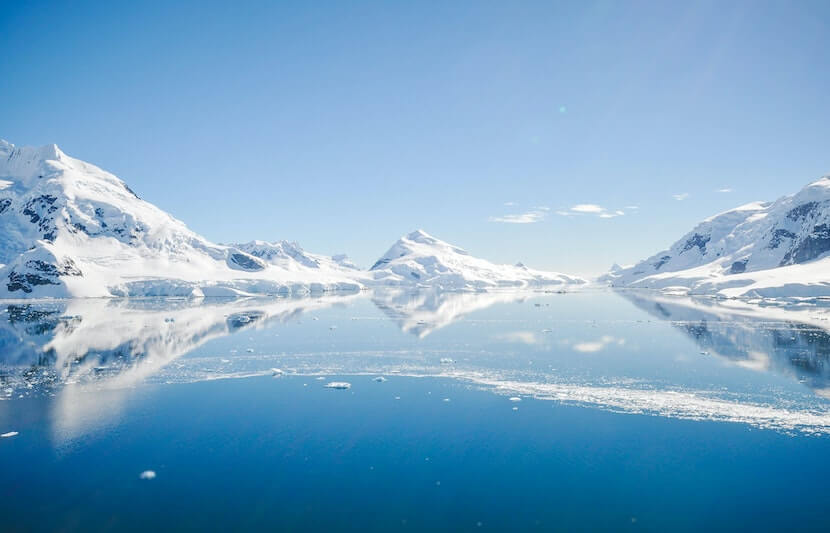Antarctic winter seas release significantly more carbon dioxide than previously believed, according to new data collected by diving robots in the Southern Ocean.
The study, conducted by the University of Washington, the Monterey Bay Aquarium Research Institute, Princeton University and several other oceanographic institutions, used data collected by floating sea drones that monitor the water around Antarctica and provide information on how it functions in the global climate system.
“These results came as a really big surprise, because previous studies found that the Southern Ocean was absorbing a lot of carbon dioxide,” Alison Gray, a UW assistant professor of oceanography, said in a statement.
“If that’s not true, as these data suggest, then it means we need to rethink the Southern Ocean’s role in the carbon cycle and in the climate.”
The paper is published in the journal Geophysical Research Letters.
Floating sea instruments
The data for the study was collected by the Southern Ocean Carbon and Climate Observations and Modeling (SOCCOM), a $21-million dollar project based in Princeton University and funded by the National Science Foundation.
SOCCOM was initiated just four years ago as an effort to deploy dozens of floating robots during the winter in the Southern Ocean — a place and season that remains poorly studied despite its importance in regulating climate.

The Southern Ocean is one of the few places where water that has spent centuries in the deep ocean travels all the way up to the surface to rejoin the surface currents and connect with the atmosphere.
In the planet’s life cycle, carbon atoms move between rocks, rivers, plants and oceans, and learning the rate of these various transfers helps to predict the long-term levels of carbon dioxide.
But until now, few winter measurements existed due to the ocean’s harsh storms and circumpolar current and winds.
“The Southern Ocean is a vast, stormy, cold, and distant place, which makes it extremely hard to make enough observations from a ship there,” said Gray.
“Previously our best estimates of the oceanic carbon uptake were based on observations collected by ships, but in the Southern Ocean in particular, we don’t have many ship-based observations for a large part of the year (fall and winter).”
Now, with autonomous instruments that dive and drift through the ocean, researchers can collect data from all over the Southern Ocean during all seasons.
“This is science at its most exciting — a major challenge to our current understanding made possible by extraordinary observations from the application of new technologies to study previously unexplored regions of the ocean,” Jorge Sarmiento, SOCCOM director and Princeton’s George J. Magee Professor of Geoscience and Geological Engineering, said in a statement.
Gathering data
The new observations were collected by 35 of the floating instruments between 2014 and 2017.
The instruments work by drifting with the currents and changing their buoyancy to collect observations at different depths.
For nine days, the instruments dive down to one kilometer and float with the currents. Then they drop further to two kilometers and rise back to the surface while measuring water properties. Once they surface, they send their observations back to shore via satellite.
Not only do the floats monitor ocean temperature and salinity, but they also gather data on dissolved oxygen, nitrogen and pH.
In their new paper, the researchers used the pH measurements to calculate the amount of dissolved carbon dioxide to figure out how strongly the water is absorbing or emitting carbon dioxide into the atmosphere.
Findings
The researchers looked at circles of increasing distance from the South Pole, and found that the open water next to sea-ice covered waters around Antarctica is releasing significantly more carbon dioxide than expected to the atmosphere.

“The SOCCOM floats, by collecting data year-round and in many different parts of the Southern Ocean, have shown that in winter, the region just north of the waters covered by sea ice emits a significant amount of carbon dioxide to the atmosphere,” said Gray.
“This indicates that as a whole, the Southern Ocean is not absorbing nearly as much carbon dioxide as we previously thought.”
However, Gray explained, it’s not surprising that the water in the region is outgassing, since the deep water is so rich in carbon.
“But we underestimated the magnitude of the outgassing because we had so little data from the winter months. That means the Southern Ocean isn’t absorbing as much carbon as we thought,” she said in a statement.
The new information gives researchers the ability to further analyze the Southern Ocean’s activity and predict future climate trends.
What’s next?
The researchers are working on several next steps to follow up on the results from the paper, Gray said.
Among these include comparing the SOCCOM observations to climate models, determining the processes that are producing high carbon fluxes, combining the shipboard data and the float data to produce updated estimates of the fluxes, and continuing to analyze the data being transmitted from the instruments.
Additionally, the researchers are interested in determining where the “missing” carbon is.
“In other words, if CO2 isn’t being absorbed by the Southern Ocean where we previously thought, then where is it going?” said Gray.
“It may be taken up by the ocean somewhere else, or maybe our estimates of the impacts of land on the carbon cycle need to be revised. A lot of people are working on understanding this very important region and its impact on the global climate system.”



